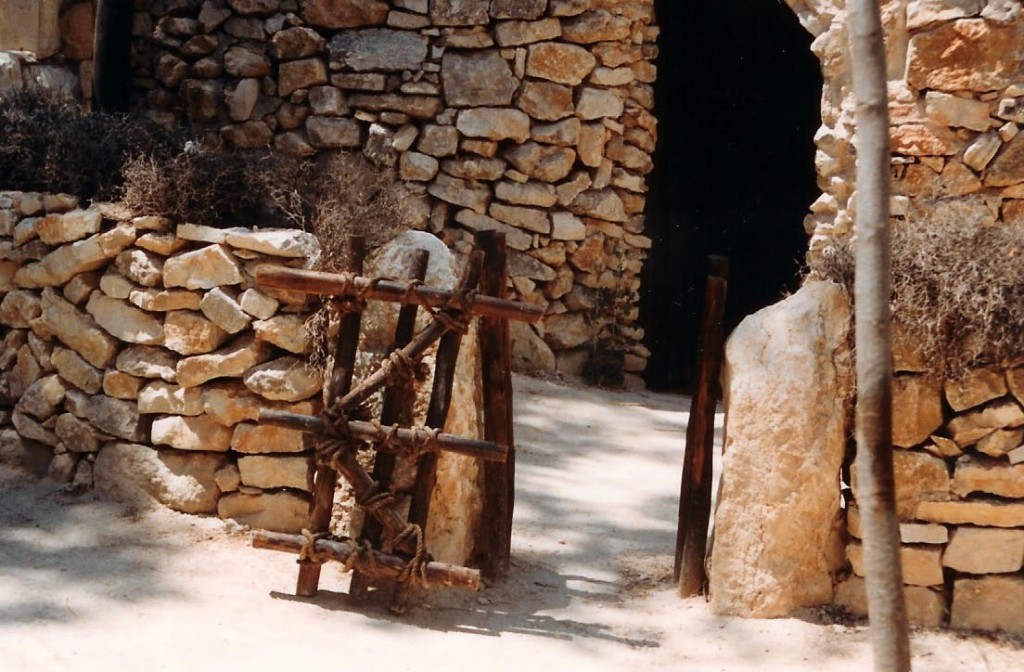11.02.26 Jn. 10:1-6
SHEEP AND THEIR SHEPHERD
1 “I assure you: Anyone who doesn’t enter the sheep pen by the door but climbs in some other way, is a thief and a robber. 2 The one who enters by the door is the shepherd of the sheep. 3 The doorkeeper opens it for him, and the sheep hear his voice. He calls his own sheep by name and leads them out. 4 When he has brought all his own outside, he goes ahead of them. The sheep follow him because they recognize his voice. 5 They will never follow a stranger; instead they will run away from him, because they don’t recognize the voice of strangers.”
6 Jesus gave them this illustration, but they did not understand what He was telling them.
John 10 is known as the “Shepherd Chapter” of the Bible. It is here where Jesus was again criticized by the Pharisees (the shepherds of the people) for healing on the Sabbath. The prophet Jeremiah had little good to say about the Jewish leaders in his day. He warned that those who failed to care for the people of God would be severely punished (Jer. 23:1-2). Ezekiel gave stronger words (Ezek. 34). The response of Jesus was an obvious reflection upon Ezekiel 34 since the shepherds were more concerned with their own welfare than caring for the common people. Careful reading of the text reveals that the issue begins in John 9:40 where the Pharisees are identified as blind thieves who are deceiving the flock. The duplicated phrase of 10:1 emphasized the preceding passage after which Jesus gave His parable of the good shepherd. He often referred to Himself as the Good Shepherd.[1] The Pharisees still failed to understand Him (Jn. 10:6) and, therefore, He gave another illustration.
Jesus had the right credentials; He had the right genealogy, the right confirmation at the time of His baptism, fulfilled the prophecies of His birth and life, and performed the messianic miracles to enter the sheep pen by the gate. The leading Pharisees and other religious leaders created their own way to enter the sheep pen and harm the sheep with false teachings. The Sadducees, including Caiaphas and his entire family, were committed to a Hellenistic lifestyle and gave only lip service to the Torah.
There is a problem in understanding this passage. But it is not so much with the passage, but rather, the simple fact that people today are so far removed from this ancient agricultural society and Jewish roots, that they have difficulty perceiving the full depth of its meaning. In ancient times, shepherds did not raise sheep for meat, although on rare occasion one was slaughtered for a feast. The sheep were raised for wool and, therefore, they became very old. The shepherd often had a name for each one. Furthermore, they listened and obeyed him very carefully.
“I assure you,” This phrase has also been translated, I tell you the truth, truly, truly, or verily, verily, which underscored the importance of the preceding six verses.[2] The term amen (Gk. amen, 281)[3] is a confirmation of truthfulness. In the Greek, there is a deliberate repetition of a word to underscore its significance. This was a common practice for the use of emphasis. In this case, John placed an unusual emphasis on the fact that he is stating a truth that must be carefully observed.[4] Statements such as this have recently given scholars serious consideration that this gospel may have originally been written in Hebrew.
Some scholars believe that the phrase truly, truly, or its translated equivalent, places the emphasis on the preceding statement, not the following statement as is often translated. As such, it should be translated, amen, amen.[5] Since neither Greek nor Hebrew had punctuation marks, the translators throughout history have assumed this was to emphasize the phrase that followed, not what had preceded it. The original writings did not have chapter or verse divisions. Historians have given various dates as to when these were incorporated into Scriptures. Some say chapter divisions date to the seventh century, but most most scholars believe chapter and verse divisions were added between the years 1228 and 1551 respectively.[6] Regardless, there appears to be a concensus that the phrase “amen, amen” should be at the beginning of the next verse rather than at the end as it is now. However, its present position does not change the meaning, only the emphasis as it would have been understood in the first century. When numerous Old Testament passages are examined, Amen is said by God to mean, it is and shall be so, and by men, so let it be.[7]
“The doorkeeper opens it for him.” “The doorkeeper” is the hired hand who guarded the sheep at night while the shepherd slept. He opened the sheep-fold door in the morning at the arrival of the shepherd.
[1]. See Hebrews 13:20 that refers to our Lord Jesus as the Great Shepherd of the sheep and 1 Peter 2:25 that refers to stray sheep who returned to the Shepherd, the Overseer of their souls.
[2]. Blizzard III. “Jesus: I am the Good Shepherd.” Yavo Digest 1:1, 7. See also 05.04.02 and 15.01.05.
[3]. Vine, “Amen.” Vine’s Complete Expository Dictionary. 2:25; and “Verily” 2:659.
[4]. .https://mail.google.com/mail/?shva=1#inbox/135861d7fcdfed9d Retrieved February 22, 2012. See also Jn. 1:51; 5:19, 24, 25; 6:26, 32, 47, 53; 8:34, 51, 58; 10:1, 7; 12:24; 13:16, 20, 21, 38; 14:12; 16:20, 23.
[5]. Lang, Know the Words of Jesus. 279.
[6]. Most historical sources credit Stephen Langton for placing chapter divisions in the Vulgate Bible in the year 1228. Then, in 1240, Hugh De St. Cher introduced verse divisions in the Hebrew Bible. But it wasn’t for another three centuries, in 1551, when Robert Stephen introduced verse divisions in the Greek New Testament. See Heysham, The Birth of the Bible. 10.
[7]. Vine, “Amen.” Vine’s Complete Expository Dictionary. 2:25.
